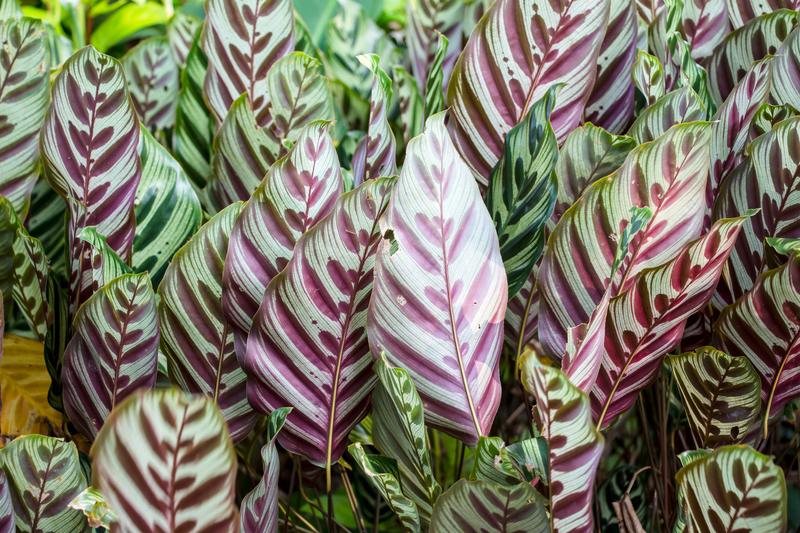Cultivating Your Own Herb Garden
Posted on 24/05/2025
Cultivating Your Own Herb Garden: A Comprehensive Guide for Beginners
Would you love adding fresh flavor to your meals, enjoy aromatic greenery, and embark on a rewarding gardening adventure? Cultivating your own herb garden at home is the key! Whether you have a sprawling backyard or a tiny apartment balcony, growing herbs can be incredibly satisfying, eco-friendly, and beneficial for your well-being.

Why Start an Herb Garden?
Home grown herbs are prized for their freshness, potency, and cost-effectiveness. Creating your own herb garden enables you to:
- Enhance culinary creations with freshly harvested flavors.
- Enjoy healthier meals thanks to nutrient-dense, chemical-free herbs.
- Reduce your carbon footprint by minimizing the need for store-bought, packaged herbs.
- Boost your mood and well-being through the calming act of gardening.
- Decorate your living space with lush greenery and enticing aromas.
Best Herbs to Grow in Your Garden
Starting your own herb patch is engaging and straightforward. Beginners should focus on plants that are hardy, resilient, and offer continuous harvests. Here are some popular choices for cultivating your own herb garden:
- Basil - Ideal for salads, sauces, and garnishes.
- Mint - Great for teas, desserts, and cocktails.
- Rosemary - Adds depth to roasted dishes and breads.
- Thyme - Perfect for soups, stews, and roasted meats.
- Oregano - A staple in Mediterranean cooking.
- Parsley - Versatile in both cooking and garnishing.
- Cilantro - Essential for salsas and curries.
- Sage - Great with poultry and savory dishes.
- Chives - Mild onion flavor for diverse uses.
Tip: Choose herbs you already love to eat and cook with!
Choosing the Right Location for Your Herb Garden
Successfully growing your own herbs starts with picking an optimal location. Consider these essential factors when deciding where your herb garden will thrive:
Sunlight Requirements
- Most herbs need at least 6 hours of sunlight daily. South-facing windows, balconies, or sunny spots in your yard are ideal.
- If space is limited, use grow lights to support healthy growth indoors.
Soil Quality
- Herbs prefer well-draining soil rich in organic matter.
- Mix compost or organic fertilizer into your garden beds or containers for best results.
Space Considerations
- Herbs can flourish in gardens, pots, raised beds, or even vertical planters.
- Container gardening is perfect for patios and balconies, allowing mobility and easy management.
Accessibility
- Keep your herb garden within arm's reach of your kitchen for convenient harvesting.
- Make watering and pruning tasks simple by ensuring easy access.
Planting Your Herb Garden: Step-by-Step Instructions
Ready to dig in? Follow these actionable steps to start cultivating your own herb garden:
Step 1: Choose Seeds or Starter Plants
- Beginners often find it easier to start with small plants from nurseries or garden centers.
- If using seeds, follow the sowing instructions on the packet for depth and spacing.
Step 2: Prepare Your Containers or Garden Bed
- Select pots with drainage holes to prevent waterlogged roots.
- Fill with high-quality potting mix or garden soil enriched with compost.
- Level and gently pat the surface to avoid compacting the soil too much.
Step 3: Plant & Space Properly
- Place seedlings or sow seeds according to their recommended distances (usually 8-12 inches apart).
- For container gardens, avoid crowding as it inhibits air flow and growth.
Step 4: Watering Your Herb Garden
- Water herbs when the top inch of soil feels dry. Overwatering can lead to root rot, so err on the side of slightly dry rather than soggy soil.
- Early morning watering reduces evaporation and helps plants start the day hydrated.
Step 5: Provide Adequate Light
- Rotate containers periodically to ensure even exposure to sunlight.
- During winter, supplement natural light with full-spectrum grow lights as necessary.
Step 6: Fertilization & Maintenance
- Herbs are generally low-feeders; avoid heavy fertilization as it may dilute flavor and oils.
- Feed monthly with a diluted, organic liquid fertilizer.
- Keep the bed or containers weed-free and aerated for optimal plant health.
Ongoing Care for Your Herb Garden
Maintaining your own fresh herb garden comes down to simple, regular care. Pay attention to these elements:
- Pruning and Harvesting:
- Regularly trim the top leaves to encourage bushy, vigorous growth.
- Harvest herbs in the morning for best flavor and aroma.
- Pest and Disease Control:
- Check plants often for aphids, mites, or mildew.
- Remove affected leaves and use organic solutions like neem oil or soapy water.
- Mulching:
- Add a thin layer of straw or leaf mulch around your herbs to keep soil moist and discourage weeds.
- Rotation:
- If you're cultivating herbs in garden beds, rotate their location each year to prevent soil nutrient depletion and disease build-up.
Extending the Herb Harvest
Even the best-tended herb gardens eventually produce more than you can use fresh. Preserve your bountiful harvest and reduce waste by using these methods:
- Drying: Hang bunches of hardy herbs like rosemary, oregano, and thyme upside-down in a cool, dry, well-ventilated place.
- Freezing: Chop soft-leaf herbs like basil, cilantro, or parsley and freeze in ice cube trays with water or olive oil for easy portions.
- Infusing: Use fresh herbs to infuse vinegars, oils, or make homemade herbal teas.
Properly harvested and stored herbs retain flavor and medicinal properties for months!
Creative Ideas for Herb Garden Design
The beauty of cultivating a home herb garden is that it allows endless personalization:
- Windowsill Herb Gardens: Small pots lined up on a kitchen windowsill are both practical and decorative.
- Vertical Herb Planters: Utilize wall space with hanging pockets or stacked planters, which are ideal for balconies and patios.
- Spiral Herb Beds: Garden spirals create microclimates for different herbs, enhancing variety in a compact footprint.
- Raised Beds: Provide better drainage and accessible care for a diverse mix of herbs.
- Themed Gardens: Create a pizza herb garden (basil, oregano, thyme), a tea garden (mint, chamomile, lemon balm), or a medicinal herb patch (calendula, echinacea, sage).
Common Challenges When Growing Your Own Herbs--and How to Overcome Them
No garden is without its hurdles. Luckily, most herb gardening setbacks are easy to resolve:
- Poor Germination: Use fresh seeds, keep them moist (not soaked), and provide adequate warmth.
- Yellowing Leaves: Indicates overwatering or poor drainage--adjust watering and check soil.
- Leggy Growth: Insufficient sunlight is the usual culprit. Move plants to a sunnier spot or add artificial lighting.
- Pests: Prevent infestations by pruning, spacing, and keeping leaves dry. Use organic sprays only as needed.
Benefits Beyond the Kitchen
Cultivating a home herb garden doesn't just yield culinary rewards. Studies show gardening can reduce stress, improve mental focus, and foster a sense of accomplishment. Having fresh, aromatic plants nearby can also enhance indoor air quality and serve as natural insect repellents (e.g., mint deters ants and mosquitoes).
Popular Questions About Cultivating Your Own Herb Garden
- Can I grow herbs year-round?
Many herbs thrive indoors during winter with adequate light and warmth. Stagger plantings for a continuous supply. - How often should I fertilize my herb plants?
Monthly light feedings with organic fertilizer are generally sufficient--herbs respond poorly to heavy feeding. - What herbs are best for shady spots?
Mint, parsley, chives, and cilantro can tolerate partial shade. - Can I grow herbs together in one pot?
Yes, as long as they have similar water and sunlight needs. For example, combine rosemary, thyme, and oregano, or group mint varieties together elsewhere, since mint is very vigorous.

Getting the Most Out of Your Herb Garden
Regularly experiment with new herbs, study their unique requirements, and adapt your care routine with the seasons. Growing different varieties or rotating your plant selection keeps your harvest interesting and your gardening skills sharp.
- Add edible flowers like nasturtiums or calendula for color and unique flavor.
- Try hydroponic systems for fast, soil-free herb production in small spaces.
- Join local gardening clubs or online forums to exchange tips and plant cuttings.
Start Cultivating Your Own Herb Garden Today!
Creating a thriving herb garden at home is a fulfilling experience for beginner and veteran gardeners alike. With the right selection, proper placement, and a touch of daily care, you can enjoy fresh, aromatic herbs year-round. Not only will your meals be more flavorful, but your home will be brighter, greener, and healthier.
So why wait? Gather your seeds, pots, or garden tools and embark on the journey of cultivating your own herb garden--a rewarding hobby that just keeps on giving.
Your future self (and your tastebuds) will thank you.

